 According to this Tribune news report, the Archaeological Survey of India (ASI) has summarily renamed the Shankaracharya Hill to Takht-e-Suleiman overlooking the Dal Lake in Srinagar. If this was not enough, the ASI has also presented a distorted version of the history of the Shankaracharya Hill on the tourist information plaque, a move which has justifiably outraged the Kashmiri Pandits. From that news report:
According to this Tribune news report, the Archaeological Survey of India (ASI) has summarily renamed the Shankaracharya Hill to Takht-e-Suleiman overlooking the Dal Lake in Srinagar. If this was not enough, the ASI has also presented a distorted version of the history of the Shankaracharya Hill on the tourist information plaque, a move which has justifiably outraged the Kashmiri Pandits. From that news report:
‘It is a matter of great concern that ASI has given the name Takht-e-Suleiman (Throne of Solomon) to it, replacing the earlier plaque. How have they come to this conclusion warrants an answer,’ said Predhuman K. Joseph Dhar, an expert on ancient Kashmir history. He said recently a European historian visited the place and expressed surprise over information provided to the people.
Of course, there is no question that this move is politically motivated because it has no basis in history. One wonders what is the connection between Suleiman/Solomon and Adi Shankara.
Even a layman in India knows that Adi Shankara travelled in all four directions in India and established maths in prominent places in each direction. That apart, he consecrated several other major and minor temples and other places of worship like in Kanchipuram in Tamil Nadu, Kollur in Karnataka, and in Sharada in Pak-occupied Kashmir.
Kashmir indeed has a hoary history as one of the finest centres of learning in the world. In its heydays, it attracted scholars and philosophers from all parts of India. In the annals of the Hindu tradition, Kashmir was almost synonymous with “Sharada Desha” or “Sharada Peetha” or the Pedestal of Goddess Sharada (or Saraswati, the Goddess of Learning). A conclusive evidence of this exalted status of Kashmir can best be gleaned from the famous verse in praise of Saraswati as
Namaste Sharada Devi Kashmirapuravasini
I bow to you, Goddess Sharada,
the One who Resides in the Kashmira country
This verse is so commonplace recited and heard by millions of Hindus daily across the world that hardly anybody gives a second thought at the rich historical heritage that’s embedded in it. And the credit for establishing Kashmir as the Sharada Peetha, to make it part of the nation’s cultural and spiritual DNA goes to Adi Shankara.
And it is this hoary heritage that the ASI has sought to destroy unceremoniously by renaming the Hill after some Suleiman based on a spurious history. Needless, in the process, real history has been made an unfortunate victim. From the same report,
‘While the plaque informs the people that the roof of the temple was constructed by Mughal emperor Shah Jahan in 1644 AD, there is no mention of King Gopadhari, who [repaired] the temple, King Lalitaditya, who renovated it several hundred years before the arrival of Islam in the 13th century, and Dogra rulers, who placed the lingam of Lord Shiva, which was destroyed at the orders of Jehangir’s wife Noor Jehan,’ said Dhar
As for the spurious history,
Talking about the name Takht-e-Suleiman, New York-based historian and author of Jesus in Kashmir: The Lost Tomb, Suzanne Olsson, said at one time Kashmir was controlled by Jews and Suleiman referred to Solomon, King of Israel and one of the greatest Jewish rulers, known for his wisdom and riches. ‘In ancient times, there was a considerable influence of Hebrew people in Kashmir. Several places have names similar to Jewish places. But historically, it is referred to as Shankaracharya Hill,’ Olsson said.
One wonders whether Suzanne Olsson even understands how she contradicts her own assertion. If Jews had indeed controlled Kashmir, why don’t we have a single piece of evidence to show for it? And second, she doesn’t quite explain why despite the Jewish control, the Hill was revered and renowned as the Shankaracharya Hill? And why doesn’t Rajatarangini, the most definitive account of Kashmir’s history mention the presence–let alone control–of Jews even once? And why haven’t the galaxy of scholars and litterateurs from Kashmir–Kalhana, Abhinavagupta, Anandavardhana, Kshemendra, et al–mention Jewish influence? The truth is the Suzanne Olsson happens to be the latest purveyor of the phony theory that Jesus visited/lived in Kashmir. Two definitive sources are sufficient to puncture Suzanne Olsson’s motivated claim about Jesus in Kashmir. The first is by the redoubtable Koenraad Elst, and the second by a Buddhist monk and scholar named Shravasti Dhammika who takes a close look into various Suzanne Olssonsesque myths about Jesus’ visit and stay in India.
 All kinds of scholars making all kinds of fantastic assertions have existed since time immemorial. However, it is regrettable that the ASI, a body of the Government of India, chose to put out one such fantastic claim as the official history of a place based purely on political consideration. This does disservice not just to Hindus but to the nation’s precious heritage as a whole. More importantly, it is a dangerous portent. As we’ve seen in the case of the St. Thomas Church of Mylapore how an existing Hindu place of worship was appropriated by Christian missionaries through deceit and declared as one of the sites of Christian piety.
All kinds of scholars making all kinds of fantastic assertions have existed since time immemorial. However, it is regrettable that the ASI, a body of the Government of India, chose to put out one such fantastic claim as the official history of a place based purely on political consideration. This does disservice not just to Hindus but to the nation’s precious heritage as a whole. More importantly, it is a dangerous portent. As we’ve seen in the case of the St. Thomas Church of Mylapore how an existing Hindu place of worship was appropriated by Christian missionaries through deceit and declared as one of the sites of Christian piety.
Given this, what is the guarantee that the “Takht-e-Suleiman” will not become a dargah or mosque some time in the near or distant future and thereby erase another living place of Hindu heritage permanently? – India Facts, September 27, 2013
› Sandeep Balakrishna is the founding editor of The Dharma Dispatch.
› Those who wish to sign a petition objecting to the change of name of Shankaracharya Hill to Takht-e-Suleiman can do so HERE
Filed under: india | Tagged: adi shankara, archaeological survey of india, hindu temple, kashmir, takht-e-suleiman |


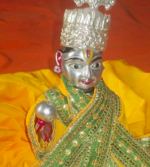






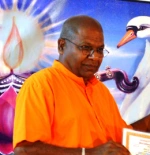

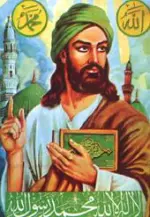







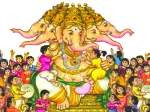



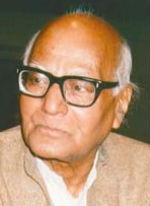






No Plans to Change Hindu Names of Hillocks, Says Omar – Fayaz Wani – TNIE -18 March 2014
SRINAGAR: The J&K Government has said it did not rename the two hills, which has Hindu names, as claimed by some Kashmiri Hindu groups that staged protests in Delhi.
The groups alleged that the J&K Government renamed the Shankaracharya hill here as ‘Takht-e-Sulaiman’ and Hariparbat range as ‘Kohi-e-Maran’.
The Shankarachayara temple is situated atop the Shankaraychaya hill and there is a temple on the Hariparbat.
A shrine of renowned and revered Sufi saint Sheikh Hamza, popularly known as Makhdoom Sahib, is also located on the Hariparbat and hundreds of devotees visit the shrine everyday. The Shankarachaya hill is located at a height of 1,100 ft.
The Hindu groups and some Kashmiri Hindus staged a protest in Jantar Mantar on Sunday to protest against the renaming of the hillocks.
A spokesman of the All Parties Migrants Co-ordination Committee (APMCC) said the protest was held against the “discriminatory attitude” of the Jammu & Kashmir and Central Governments towards Kashmiri Hindus.
He said they have asked the government to come clean on the name-change of various Hindu religious places in Kashmir.
Reacting to the protests, Jammu &Kashmir Chief Minister Omar Abdullah in a series of tweets denied that the government had renamed the hillocks. “There is no proposal by the State government to change the name of Shankracharaya Hill in Srinagar,” Omar said.
He further said he spoke to officials of Archeological Survey of India officials in this regard. “They told me that there was no such proposal,” he said.
He said he had wanted to stay out of this discussion since it was based on figments of imagination.
“There have always been parallel names for Shankracharaya hill & always will be. This is not the only place with two or more names.”
“So can we please put this unnecessary drama to rest and stop manufacturing an issue where none exist,” the Chief Minister said.
LikeLike
ASI should be legally challenged at the Supreme Court level. Let all the facts come out during the legal proceedings. Solomon, Abraham, Noah, Moses, Jesus – all are bogus fictitious nonentities presented to the world as historical figures by the Christian Church and Western propagandists. Some Kashmiri Pandits are challenging the ASI and trying to get the fraudulent name of the nonexistent Solomon expunged from any information about the hill. They need help. But a billion other Hindus as usual are comatose — they do not know what is going on in their own country.
LikeLike
Incredible that the ASI should be involved in this act of defacing Hindu history!
LikeLike
Thank you kindly for the links.
Contrary to what you may think, Hindus will take careful note of these articles and they will get reposted on various Hindu sites.
LikeLike
KING SOLOMON: FACT OR FICTION by Sidney Woolf
Whoever wrote the First Book of the Kings and the Second Book of the Chronicles could not foresee the detailed verification potential of modern archaeology.
The city of King Solomon in Jerusalem is thought to be on the slope leading down from what is now the Al Aqsa mosque. Israeli archaeologists have been desperately excavating the site for many decades yet not one iota of evidence of the existence of King Solomon has been found. No mention of his name has been found on any tablet, inscription, tax record or pot decoration.
Anyone who has visited Egypt will have seen widespread evidence of a monarch who reigned three hundred years before Solomon, Pharaoh Rameses II, yet of King Solomon who ruled over a vast empire and army (1 Kings 4, 21-26 and 1 Kings 9, 17-23, 2 Chronicles 9, 25-26) there is no trace. All the vassal peoples who paid taxes to him have left not a single record of account or inscription. Not one of the soldiers of his conquering army left a sword, helmet or shield.
Professor Yadin’s two volume work “The Art Of Warfare In Biblical Lands” (International Publishing Co. Ltd., Jerusalem 1963) has ample illustrated examples of discovered contemporary armour and weapons from other lands, but one looks in vain for a single item from the Solomonic empire.
Search through Israel’s museums and you will find no evidence from the empire although there are ample artefacts marked “Canaan” or “Philistine”. It is inconceivable that if Solomon and his empire had existed in reality not a trace of them could be found from all the archaeological “digs” throughout Israel.
Who then created this fiction, when and why? Many Hebrews of the Babylonian captivity, 586 BCE rose to leading positions in Babylon, became established and wealthy. They had no wish to return to the harsh life of a deserted and derelict land. The Hebrew people were facing the greatest threat ever: total annihilation by assimilation, and their land had been entered by armed hostile tribes.
A young guard of “Zionist” activists grew up, just as they did recently in the former Soviet Union. In order to attract people to the idea of returning they had to create a glorious past, military conquests and a rich empire. Hence the symbol of Solomon.
The books of the Old Testament, except Nehemiah, were written during the same period for the same purpose – becoming the hoax of the millennia.
It is no coincidence that the writers created Abraham as going from Babylon (Ur of the Chaldees) to Canaan, which is precisely the journey they were convincing the Hebrews to undertake.
The Exodus story was to demonstrate that even fleeing from slavery, enduring forty years with their only food being provided by God, and facing powerful armies, the Hebrews triumphed and re-established their state.
How much easier their re-establishing would be now!
The problem would have arisen of Babylonian mixed union parents and offspring being ostracized in the return to the state. The story of Ruth and Boaz was inserted to allay such fears.
The books of the Old Testament could not have been written during the era of the Kings, before the Babylonian captivity, as the invidious comparison of the weak king with the former power of Solomon would have resulted in the execution of the writers. Furthermore, to forecast long before the captivity and the resulting large settlement of Hebrews in Ur, that Abraham, the fictitious founder of the nation, will come from there of all places, would have made the authors remarkable fortune tellers.
There are only three possibilities for the writing of the Torah and associated books: 1. They were written by god; 2. They were written by humans inspired by god; 3. They were written by humans. If they were written or inspired by the omniscient god there would be light-years, galaxies, supernovae, black holes, and not the fairy tales in Genesis.
The writers created an omnipotent god that demanded subservience but also attended to the wants and emotions of every human being. This is the object of the story of Abraham and Isaac. Such a god has been so attractive for thousands of years to humans fearful of a lonely, cold, empty universe.
The custom was for small captive nations to be assimilated into the population of the captors and disappear from history, as happened to the Philistines. By writing these books of the Old Testament the authors convinced sufficient numbers of the Hebrews to prevent this happening to them. Although intended only for contemporary compatriots these writings by genius Hebrews have influenced belief for thousands of years after their time. They also preserved an influential Hebrew community in Babylon.
There are many human interest, romantic and sexual stories in the books by authors who evidently loved to write. Academic proof and disproof are not possible as there are no extant relevant original documents. The latter may have been deliberately destroyed to increase the god belief factor.
Millions of people have died in the Middle East and the Western World through killing each other over fiction.
LikeLike
King Solomon a nonentity never existed. Read on and find out.
http://www.sidneywoolf.com/
http://www.independent.co.uk/news/leading-archaeologist-says-old-testament-storeis-are-fiction-1500431.html
LikeLike
Thank you, Gajanan. So the Swami DIDN’T believe in a historical Jesus!
LikeLike
Full text of “Swami Vivekananda on Historicity of Jesus Christ” at
http://archive.org/stream/SwamiVivekanandaOnHistoricityOfJesusChrist/SwamiVivekanandaOnHistoricityOfJesusChrist_djvu.txt
LikeLike
Here is a postscript:
There is a story that when Swami Vivekananda was sailing on the Mediterranean from Europe to Egypt, he had a dream in which a Gnostic master appeared to him and told him that there was no real historical Jesus. Jesus, said the Gnostic, was an allegorical figure created by Gnostic teachers to personify certain principles. But early Christians did not understand that this personification was a fiction and believed Jesus to be a real person. So the creation of a ‘historical’ Jesus came about and was fixed at the First Council of Nicaea.
I am told that this story has been suppressed by the RKM leadership and is not found in Vivekananda’s Collected Works.
I would be grateful for any light that can be shed on this reference to Vivekananda and his dream.
LikeLike
Solomon is a totally fictitious character like Moses and Noah and many others. Some Jews like this lady mentioned in the article are liars or just dimwits. Jesus is a bogus, fictitious prophet who never existed.
More on Jesus at the sites below.
http://www.nobeliefs.com/exist.htm
http://www.jesusneverexisted.com
LikeLike
Russian aristocrat and forger Nicolas Notovich invented the Jesus-in-India story and published it in French at Paris in 1894 as La vie inconnue de Jesus Christ.
Years ago I looked into the sources for the Jesus-in-India story as it is related to the Thomas-in-India story. I also discussed it at some length with Sita Ram Goel. When it came to historical facts, Sitaramji was brutally honest. If the story was even partially true, he would have said so. But he didn’t. He consigned it to the dust bin of history along with the Thomas-in-India legend. What I remember of the discussion is this:
1. The story was invented by the Russian journalist Nicolas Notovitch. It was written in a very convincing style and attracted a lot of readers at the time including Hindus who swallowed everything and anything the Europeans gave them (the way Tagore, Bengal’s great intellectual and Nobel Prize winner, swallowed the Aryan Invasion Theory).
2. Max Muller asked Notovitch for proofs about his claim for Jesus in Kashmir. Notovitch was not able to produce any proofs.
3. The British official who administered the area stated that Notovitch had never visited Ladakh.
4. The present Hemis Monastery, the one Notovitch allegedly visited, did not exist till the 17th century. The earlier monastery, which was built in the 9th or 10th century, was burned down shortly after it opened. What it contained in its library is anybody’s guess. But we can be sure Jesus never visited the place as it didn’t exist in the 1st century!
5. The Abbot of Hemis monastery denounced Notovitch as a liar.
6. The whole tale of Jesus in Kashmir hinges on the term ‘Isa’, Issa’, or ‘Isha’ as the name of Jesus in the alleged documents allegedly found in Hemis Monastery. But ‘Isa’ is a Sanskrit term for “lord’ and the root for the Sanskrit ‘Iswar’ or ‘Ishwara’. By what rational has this term got associated with Jesus? It could refer to any person in authority. In a Buddhist monastery it can refer to Buddha or a Tibetan saint. Why does it refer to Jesus specifically? The name ‘Jesus’ (or its Hebrew equivalent) must appear in the documents before it can be said he is in the documents!
7. The link to Jesus through Isa is in the Koran. The term ‘Issa’ (pronounced ‘ee-ssa’) for Jesus in the Koran is arbitrary and has no meaning according to my Arabic translator. There are a number of words like this in Arabic that cannot be explained, including the term ‘Allah’. They are ‘non-existent’ words in Arabic!
8. The so-called Jesus Cave in the Himalayas is the Vashitha Guha on the Ganga above Rishikesh.
9. The Roza Bal tomb in Srinagar contains two graves, a Sufi saint and a Mogul ambassador to Egypt. The Mogul ambassador’s tomb is the ‘Jesus tomb’ in the shrine. The ambassador had converted to Christianity in Egypt and Christian cross symbols were added to his grave sometime after his death.
10. Christians did not adopt the cross as a symbol of identity until after the 3rd century AD–some scholars say as late as the 6th century. The cross and crucifix were abhorrent to early Christians who were practising Jews, as the cross was used by Roman authorities to execute political dissidents. Certainly Jesus or Thomas, both Jews, would not have used a cross as an identifying sign. Neither cross-as-Christian-symbol or Bible existed in their time.
11. The crosses found in Kashmir and Kerala–‘Thomas crosses’–were made by Nestorian Christian missionaries who passed from Kerala up the west coast of India to Kashmir and on to Tibet and China in the 8th and 9th centuries. The cross was introduced into Kerala in the 4th century by Syrian Christian immigrants from Syria and Mesopotamia.
12. All the Jesus-in-India stories present Hindus as bigoted idolaters who would not accept Jesus as a great teacher with superior teachings. The Jesus-in-India stories were invented to malign Hindus and show the inferiority of the Hindu religion.
13. The so-called Hindu-Buddhist influences in the New Testament are in fact Neo-Platonic influences—though it is recognised that there were Hindu and Buddhist scholars in Alexandria from as early as the 3rd century BC. Hindu sadhus are like leaves and get blown around the world. Our present-day glob-trotting godmen are not a new phenomenon and sadhus have always been great travellers.
14. The famous Sermon on the Mount so beloved by Gandhi is a Pagan, probably Neo-Platonic, interpolation into the New Testament. Certainly it does not represent the attitude of Jesus whose ‘great love of mankind’ did not include his own people the Jews. Jesus is the first anti-Semite and the New Testament the first anti-Semitic document. Jesus’ love for mankind is a theological invention and not what he really was about. He cursed Pharisees (Israel’s scholars and cultural leaders), pigs and fig trees and denied his mother at the marriage of Cana. He had a pronounced misogynistic attitude. His act of denying his mother at Cana would put him beyond the pale for the Hindu and make him completely unacceptable as a religious teacher.
15. According to the Carpocratians, an early Christian sect, Jesus and Lazarus (the brother of Mary Magdalene) were homosexual lovers.
16. The Jesus-in-Kashmir story cannot be accepted by believing Christians and it is considered a grave blasphemy. If Jesus did not literally die on the cross and shed his blood for his followers, Christians are not saved. That is the doctrine of all Christian sects and denominations. For the traditional Christian there is no alternative except a crucified, dead, and physically resurrected Jesus.
17. For some inexplicable reason, many Hindus are deeply attached to the story of Jesus in Kashmir. This includes RSS leaders who repeat the story and Hindu nationalists like Sadhu Rangarajan in Bangalore (who uses the story to promote himself in South Africa). The Muslim Ahmadiyya sect makes the story an official part of their concocted history.
This material is extracted from a letter sent by Swami Devananda to Sadhu Rangarajan in November 2011. See the letter at HERE
See also
1. Jesus in India: The myth of the lost years – D.M.
Murdock
2. Was Jesus really born? – Virendra Parekh
LikeLike